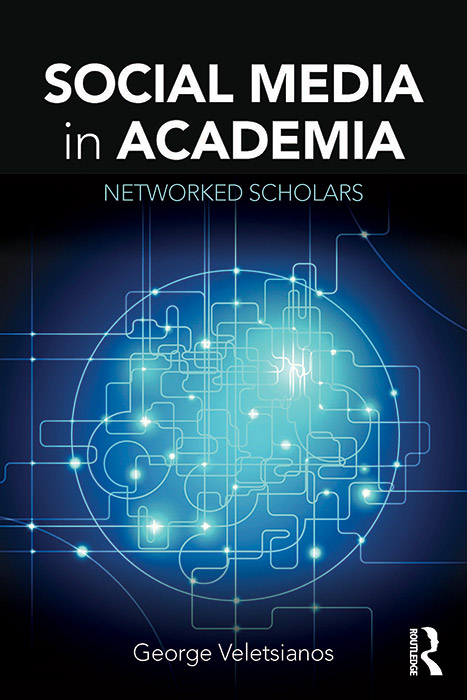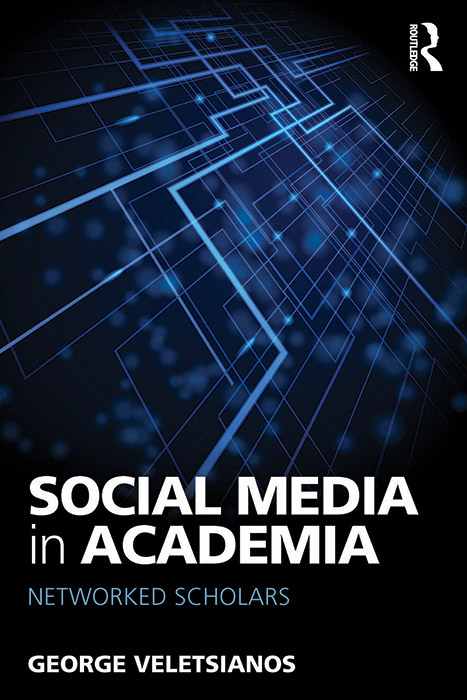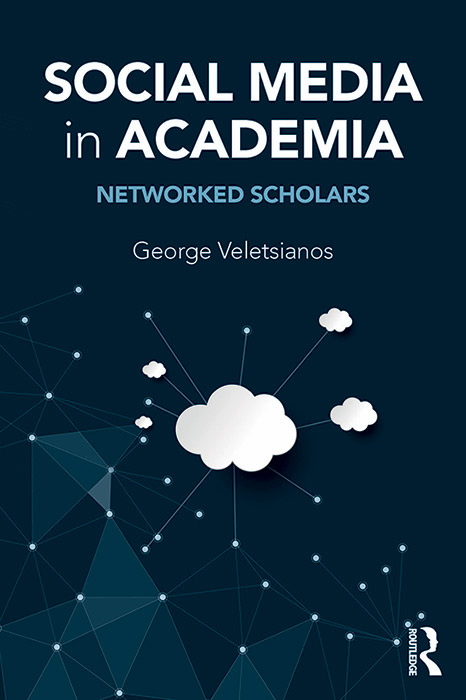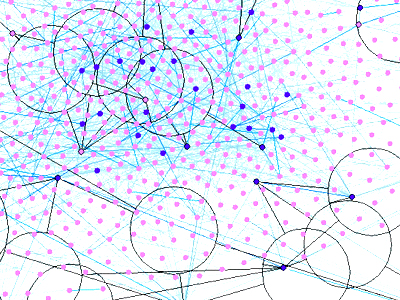I am editing, revising, and re-writing various parts of my book, Networked Scholars. The current draft of the introduction is as follows:
Introduction: What does couchsurfing have to do with networked scholarship?
It’s 2005. I’m a graduate student at the University of Minnesota in Minneapolis.
Though I don’t always enjoy driving, I am particularly fond of road trips and the opportunities they provide for learning about the world. That summer, my girlfriend and I decided to take a road trip from Minnesota to Tennessee following the roads that run parallel to the Mississippi River.
A few months prior to this trip I discovered Couchsurfing.com and this site provided one of my early experiences with modern social media
“Couchsurfing” refers to spending a night or two on the couch of a stranger. The website facilitated interactions between individuals who were interested in hosting others and individuals who were interested in spending nights on someone else’s couch.
Given my mild disdain of driving long distances, we divided our trip in such a way so as to limit daily driving to 4 to 6 hours. We arranged for accommodations driving South toward Tennessee because we wanted to follow the Great River Road, but we decided to return back to Minneapolis via a different route so as to visit more states.
Using couchsurfing.com, we found two individuals who were willing to host us on their couch. One in Diamond City, Arkansas and one in Kansas City, Kansas.
An elderly couple was willing to let us sleep on their couch in Diamond City, Arkansas. We knew nothing about Diamond City, but once we arrived we learned that Diamond City is a small retirement town, seemingly a destination only for those visiting their parents who retire there.
We arrived in Diamond City around 5pm. We stopped at one of the two local diners prior to joining our hosts so as to have an early dinner and pre-empt being a burden to our hosts. Our hosts were welcoming and friendly, and we spend the next few hours in their living room getting to know each other.
In getting to know each other, we learned that our hosts were as unsure as we were of this arrangement. We were the first people who reached out to them for hosting, and, while they were apprehensive at first, they decided to host us, as we seemed to be “just a couple of kids from the Midwest.”
Eventually we made our way to the porch. We continued our conversation, enjoying a beautiful August night, when out of nowhere, 10 or so people joined us there. They brought their chairs and musical instruments. We quickly learned that these were our hosts friends who were preparing a “hootenanny” for us. A hootenanny – an informal gathering involving folk music and dancing- was as foreign to me as I was to them. The spent many hours at the hootenanny. We danced, we learned about life in retirement towns, and discussed the demise of small-town America.
Our hosts generosity and hospitality stayed with me. These individuals were not only willing to make themselves vulnerable and share their house with us for the night, but they also went out of their way to organize a hootenanny and share this aspect of their life with us. The next morning, a group of our hosts’ friends prepared breakfast, and we left for our next couchsurfing destination: Kansas City, Kansas.
Dave, our gracious Kansas City host, invited his friends to have dinner and drinks with us, gave us a tour of Kansas City, and offered us his bed instead of the couch: He had painted his living room the night before and the smell of paint was still lingering. “Guests don’t need to be exposed to toxic fumes” he argued.
When I share these two stories with others, I often face puzzling looks and questions regarding my sanity. “What if your host was an axe murderer?” someone asked me once. “And you really don’t know these people?” is another question I am asked often. While the idea of sleeping at a stranger’s couch may not be appealing to everyone, and may sound a bit too trusting, all my limbs are still intact.
But more importantly, these stories demonstrate the power and potential of networks and openness. Supported by the Web as a social platform that allows individuals to consume, produce, remix, and contribute content without the need for specialized technical know-how, networks and openness question scholars’ foundational activities and assumption. This is one of the main ideas underpinning this book.
Social media have become part of the fabric of contemporary societies and our educational systems. Worldwide experiences with social media suggest that these technologies are actively transforming various aspects of common culture in both intentional and unexpected ways. For instance, as news agencies adopt social media to engage audiences and increase revenues, they are simultaneously reporting on instances where the use of social networking sites has led to harm. Social media have also penetrated the higher education sector, and have influenced not only the ways students connect with each other, but also the ways scholarship is organized, delivered, enacted, and experienced (Weller, 2011). Recent reports note that YouTube and Facebook are popular sites for academics with “over 90% of [2,000 faculty surveyed were] using social media in courses they’re teaching or for their professional careers outside of the classroom” (Moran, Seaman, Tinti-Kane, 2011). Open practices in a variety of educational and scholarly settings have also gained wide interest and attention in recent years (Wiley, 2006; Wiley & Hilton, 2009). Proponents of openness claim that open practices may “broaden access to education and knowledge, reduce costs, enhance the impact and reach of scholarship and education, and foster the development of more equitable, effective, efficient, and transparent scholarly and educational processes” (Veletsianos & Kimmons, 2012).
This book differs from other books focusing on social media in education and digital scholarship in a number of significant ways.
First, this is not a how-to book. You will find no advice in this book about how to use social media to share your research, engage students, or increase your citations.
Second, this book does not advocate for networked scholarship. My goal is to understand and problematize the concept of networked scholarship and its implications.
This book focuses upon scholars’ experiences and activities online because the ways that social media are used and experienced by academics are not well understood and the evidence describing the experiences of scholars engaged in scholarly practices online is both limited and fragmented.
A number of high-profile news items illustrate the tensions and diverse opinions that exist around this topic, as well as the strong emotions attached to professors’ online participation:
- “If you’re a professor in Kansas, better stay off the Internet,” proclaims the byline on a December 2013 magazine article, following the Kansas Board of Regents decision to adopt guidelines regarding “improper use of social media” that followed a professor’s Twitter update.
- Elsevier is cracking down on professors who share their research online in violation of the copyright agreements that they signed, and professors are striking back, promoting boycotts of Elsevier’s academic journals.
- While some university administrators, like the President of the University of British Columbia might “despise” social media and consider Twitter to be “one of the worst things” created in his lifetime, some academics have found community and solidarity in social media spaces.
Although the statistics regarding scholar participation on social media are worthwhile to examine, the stories behind the statistics are much more interesting and meaningful. Even in the cases where news articles present stories regarding academics’ social media participation, these fall short of the intricate tensions that arise in networked practice. For example, in addition to promoting boycotts of Elsevier numerous academics are refusing to review for publishers who do not provide open access to their work, and, more interestingly, are using networked technologies to share copyrighted materials with each other. And even though social networking sites are disparaged by some, academics have used these places to develop legitimate online learning communities, launch research projects, and share intimate details of their lives (e.g., their struggles with debilitating diseases) – converting places like Twitter into networks of care and bonding. Alternatively, even though social media allow widespread access, issues like power and influence may mediate participation, calling into doubt the democratizing potential of these technologies.
…
I used Couchsurfing.com once more when I was living in the UK in 2009. I was going to spend a few days in Faro, Portugal and had sent the following note to my potential host:
Dear Eric,
I am writing in the hopes that you will be interested in hosting me on your couch for 2 nights. I can see from your profile that it’s your birthday on May 2nd, and I would completely understand if you have something else planned.
A little bit about me: I live in the UK and moved here to teach at the University of Manchester. I lived in the United States (Minneapolis) for 8 years, but I am originally from Cyprus. I speak Greek and English and love to explore and travel, learn about different cultures, photography, music, beer, and good company. I am very friendly and considerate and am looking forward to visiting Portugal for the first time!
Please look at my profile and if there’s anything that you would like to know, please feel free to ask!
Within a few hours, Eric responded and noted that he had birthday plans and I should join. Specifically, he and his friends were having a party on an island off the coast of Faro and I should join them. The party was starting on the 1st and ending on the 3rd and long as I didn’t mind “sleeping on the floor or even on the beach” Eric was happy to host me.
Next… tying it all together.





